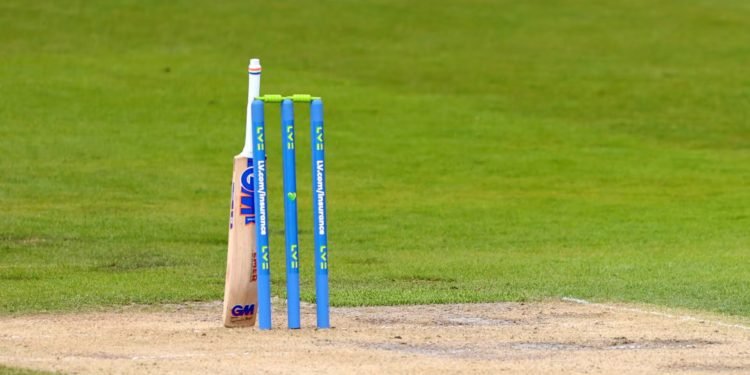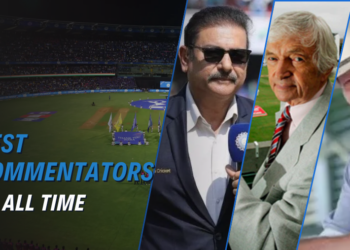Cricket has always been a game of skill and strategy, but the advent of technology has ushered in a new era for this beloved sport. Advanced tools like the Decision Review System (DRS) and Hawk-Eye are now integral to how cricket is played and experienced, marking a significant shift from tradition to modernity.
Gone are the days when crucial decisions in cricket felt like a crazy coin flip, left to chance or human error. Today, technology ensures accuracy and fairness, transforming the game into a more precise and equitable sport for players and fans alike.

DRS: Empowering Players and Enhancing Fairness
The Decision Review System (DRS) is a technological marvel in modern cricket. It includes Hawk-Eye, real-time Snickometers, and UltraEdge – technologies that detect fine edges and ball contacts. DRS has empowered players to challenge on-field umpire decisions, ensuring that critical match moments are not marred by human error.
Each team is allowed a limited number of reviews per inning, adding a strategic layer to the game. Teams must decide when to use their reviews judiciously, as a wasted review could cost them later in the game. This strategic aspect has added a new dimension to the sport, engaging players and viewers alike in the decision-making process.
Hawk-Eye: Bringing Precision to Decision Making
Hawk-Eye, a technology initially developed for television broadcasting, has become an indispensable tool in cricket. It uses a network of cameras positioned around the ground to track the trajectory of the ball from various angles. This system offers a three-dimensional representation of the ball’s path, making it pivotal in adjudicating Leg Before Wicket (LBW) decisions.
Before Hawk-Eye, LBW decisions depended solely on the on-field umpire’s judgment, often leading to controversial calls. Now, with Hawk-Eye, players have the opportunity to challenge these decisions. The technology provides a simulated trajectory predicting whether the ball would have hit the stumps, bringing a level of precision that was previously unattainable.
Snickometer and UltraEdge: Detecting the Finest Edges
Snickometer and UltraEdge are sound-based technologies used to determine whether the ball has made contact with the bat or gloves of the batsman. They use highly sensitive microphones to capture sound and are paired with slow-motion visuals to pinpoint the exact moment of potential contact.
These technologies have become crucial in caught-behind and bat-pad decisions, where even the slightest contact can be the difference between a dismissal and a continuation of the batsman’s innings.
Ball-Tracking and Predictive Path Analysis
Ball-tracking technology, a part of Hawk-Eye, has redefined how LBW decisions are approached. It predicts the path the ball would have taken had it not hit the batsman’s pad. This predictive analysis takes into account various factors like pitch, bounce, and seam movement
It makes for an accurate and unbiased decision-making tool. Umpires and players can now have a clearer understanding of the ball’s trajectory, making LBW decisions more consistent and reliable.
Enhancing Viewer Experience: Replays, Graphics, and Analytics
The impact of technology in cricket extends beyond decision-making. It has significantly enhanced the viewer experience. Replays with advanced graphics, detailed analytics, and Hawk-Eye visualizations offer fans a more in-depth understanding of the game. These technologies allow viewers to analyze the game like never before, dissecting every action and strategy in real-time.
Training and Performance Analysis
Technology has also made its mark in the training and preparation of players. Teams use data analytics, video analysis, and biomechanics to improve player performance and strategy. Coaches and players can scrutinize every aspect of their game, from batting techniques to bowling patterns and field placements, using data-driven insights to fine-tune their skills.

The Debate: Technology vs. Tradition
The integration of technology in cricket has ignited a debate that strikes at the heart of the sport’s identity. Traditionalists view cricket as a game deeply rooted in human judgment and skill, where the uncertainty and fallibility of human decision-making are intrinsic to its charm.
They argue that an over-reliance on technology risks sanitizing the game, stripping away its character and the revered role of on-field umpires. To them, the spontaneous nature of cricket, with all its unpredictability and imperfections, is what makes it uniquely captivating.
In stark contrast, proponents of technological integration advocate for its indispensable role in ensuring fairness and integrity. They argue that in an era where sports are increasingly scrutinized for accuracy, cricket cannot afford to lag behind.
The heart of this debate lies in finding a balance between preserving the game’s traditional essence and embracing the inevitable march of progress. While technology brings undeniable benefits in accuracy and fairness, it is crucial to maintain the human element that defines the spirit of cricket. The challenge lies in using technology as a complement to, rather than a replacement for, human judgment.












